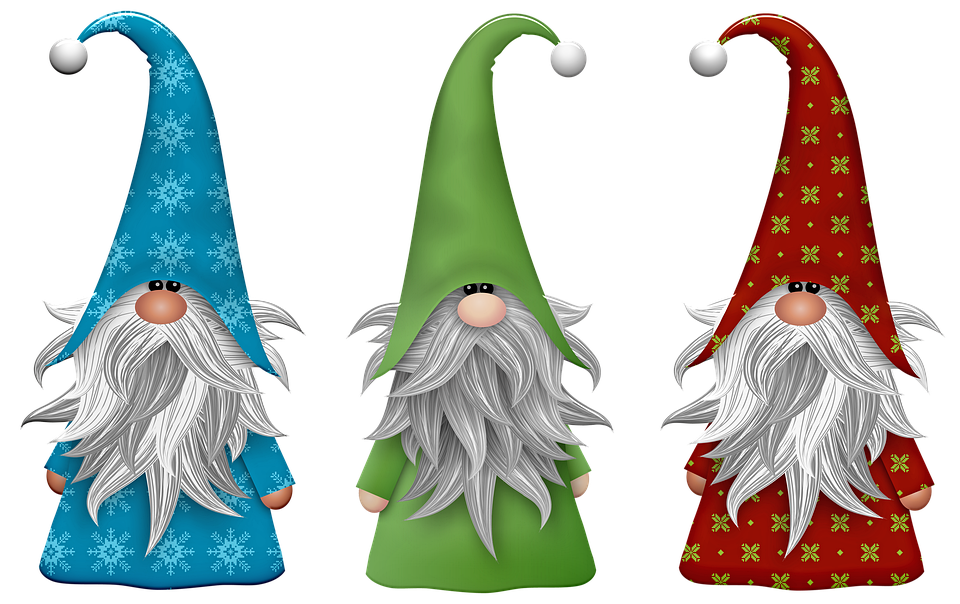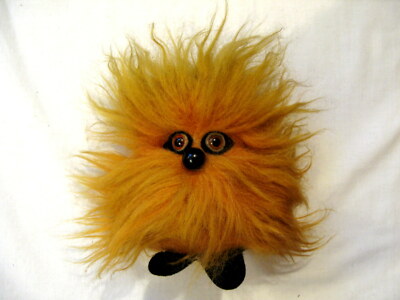
A Gonk's World...


 Gonks are a popular form of winter and Christmas-time decoration that approximates a gnome but with a much simpler body -- it appears egg-shaped, with most of its front being covered in a beard. Generally, the most you can see of a gonk is its nose, and if any limbs are present they are usually very minimal. Often they are specifically made to resemble Santa Claus for the holiday season. As you can see, are very cute!
Gonks are a popular form of winter and Christmas-time decoration that approximates a gnome but with a much simpler body -- it appears egg-shaped, with most of its front being covered in a beard. Generally, the most you can see of a gonk is its nose, and if any limbs are present they are usually very minimal. Often they are specifically made to resemble Santa Claus for the holiday season. As you can see, are very cute!
Pictured to the right is one of my own gonks, called Bouba. Although typically associated with Christmas, as said, they can in fact fit in with many holiday occasions. Bouba is a springtime/Easter gonk, for instance. There is also a huge array of Halloween gonks to collect, that I hope to see some day!
While most gonks appear to be male, or simply just have a beard, female gonks certainly do exist. They almost invariably have twin braids falling in front of each shoulder in lieu of the typical huge beard. On the left is an example of a female gonk from my collection, named Eziomi.
Gonks became popularised in the 1960s in Britain as a collectible novelty toy/household decoration.
Mythological Origins?
Although especially popular in the UK, gonks in fact originate from Scandinavian mythology, being something of a mix between a gnome and a hobgoblin. It is said that they had a great preference for the warmth of barns and houses during colder seasons and, if treated well, they would bless the family with good luck and protect them. Conversely, if mistreated, they were said to play wicked little tricks.
According to Inspirations Wholesale, gonks were first referred to in written text in the 17th century, although there are possible records as early as the 13th century. Overtime, as Scandinavian and Nordic culture began to adopt Christmas as a holiday celebration, the styles of gonks and it melded together, forming the Santa-esque gonks we now have today, typically associated with the winter season!
Traditions surrounding the gonk are very similar to those of gnomes, brownies, and other home-dwelling fae -- they are traditionally offered porridge over the winter solstice as a gesture of good will.


Classic Gonks
To the left here, you can see some examples of the original 1960s gonks, created by English inventor Robert Benson (from London). They've come a very long way from these designs, where they in fact maintain only a few similarities with the modern variety of gonk -- that being the egg-like shape, and the simplicity of their body.
Although 1960s gonks could look like this too, I think that the 1970s onwards might have been the best decades for this very furry type of gonk on the right. Here you can see some more characteristics typical of the modern gonk; namely, the huge amount of hair, the continued minimal and egg-shaped body, and the largely hidden/minimalistic face. It seemed they continued this way throughout these decades.
One thing that made gonks so successful as a child's toy is that they were very easily made, as they consisted of very few (and basic/common) materials and could be made in any size. They also had a great collectible nature as due to their simplicity, variations were easy to make.

Collecting Gonks
Gonks come in a huge range of sizes, and can therefore be placed almost anywhere in the home. My favourite place for gnomes is on window sills, because they get to have a nice view of outside from the comfort of inside the home. I also have many gonks at my computer desk to remind me of whats important. If I had a hearth, I would definitely place a lot of gonks around it, so they can be warm and cosy during the winter.
I consider gonks a bit of a subspecies of gnomes, and in the UK it is much easier to find gonks in shops than it is to find more traditional gnomes -- this is why my collection consists of so many gonks.
I love gonks, as they feel like a fresh and accessible, "cuter" form of gnome that lots of people find appealing. I love the presentation of them with hidden faces and large beards and hats. I think if I was a gnome I would look a lot like a gonk! I really like that there's a form of gnome that is so popular to collect, even if it's just for one season. I think gonks, like Bouba shown earlier, can be perfect for any season. I really love springtime gonks.

Very delightful "Scottish Gonk Tam 'O Shanter Figurine With Tartan Kilt." Take a look if you get the chance.
Here are some pages where you can read a bit more detail about gonks! They are basically just sites to advertise them, as they're purely collectible and their connections to mythology are very superficial.



